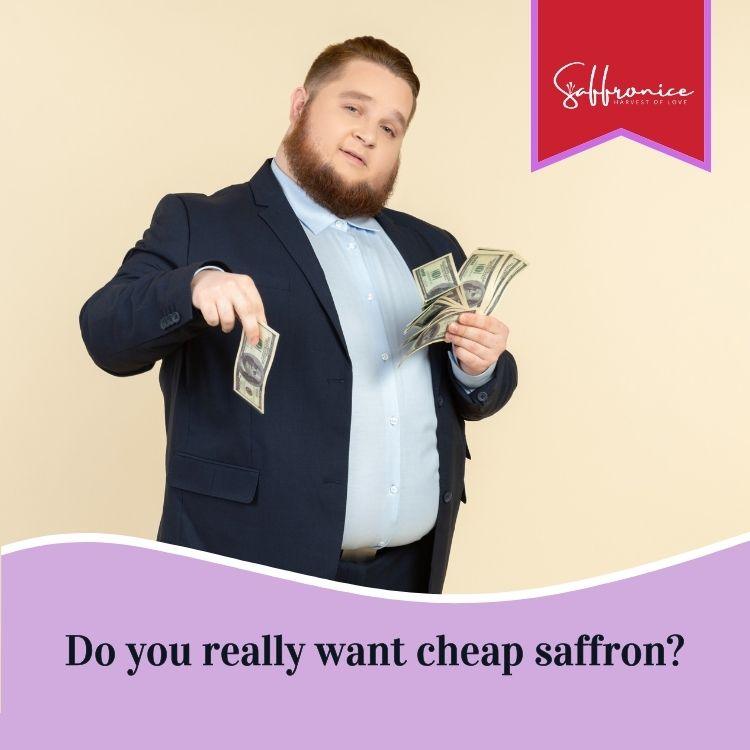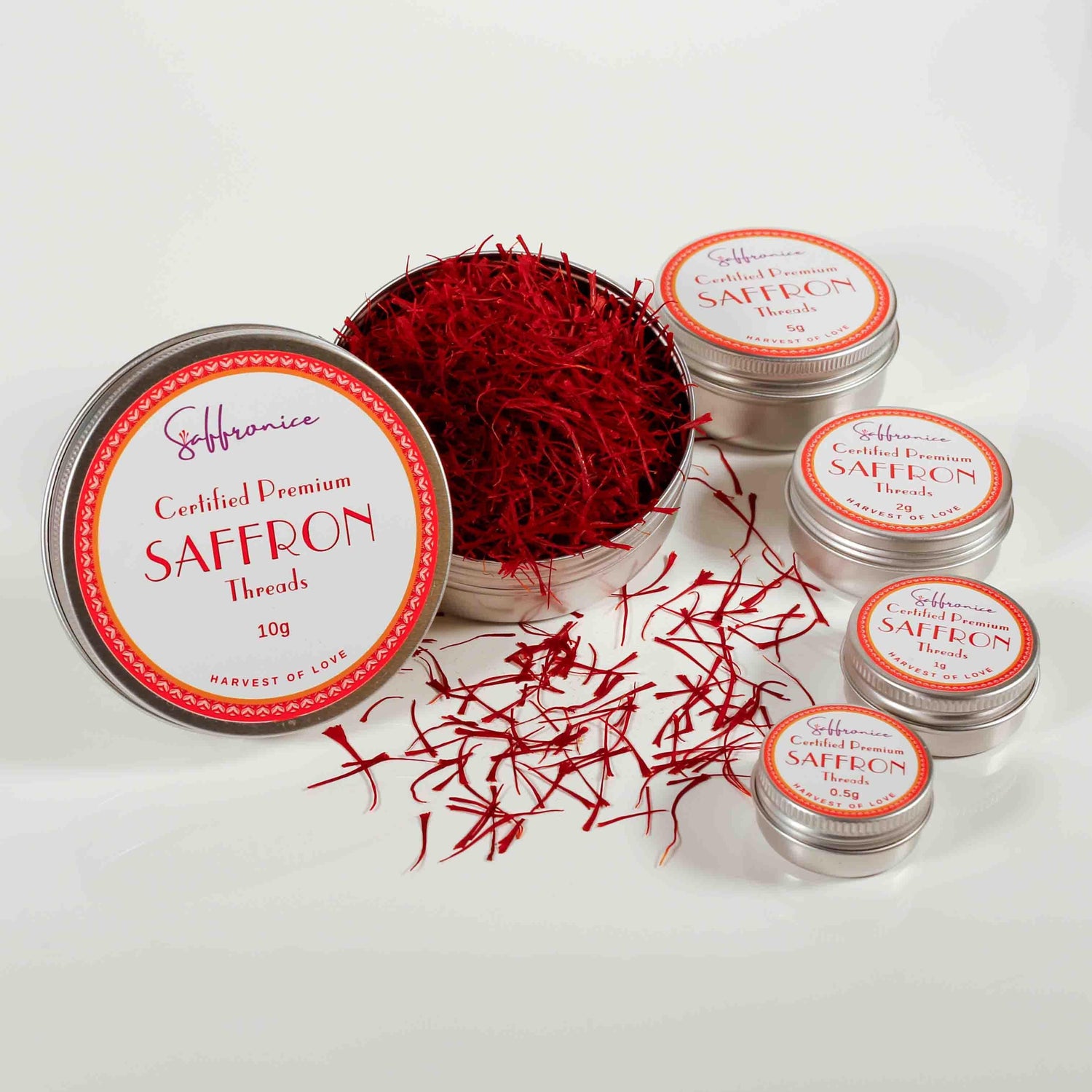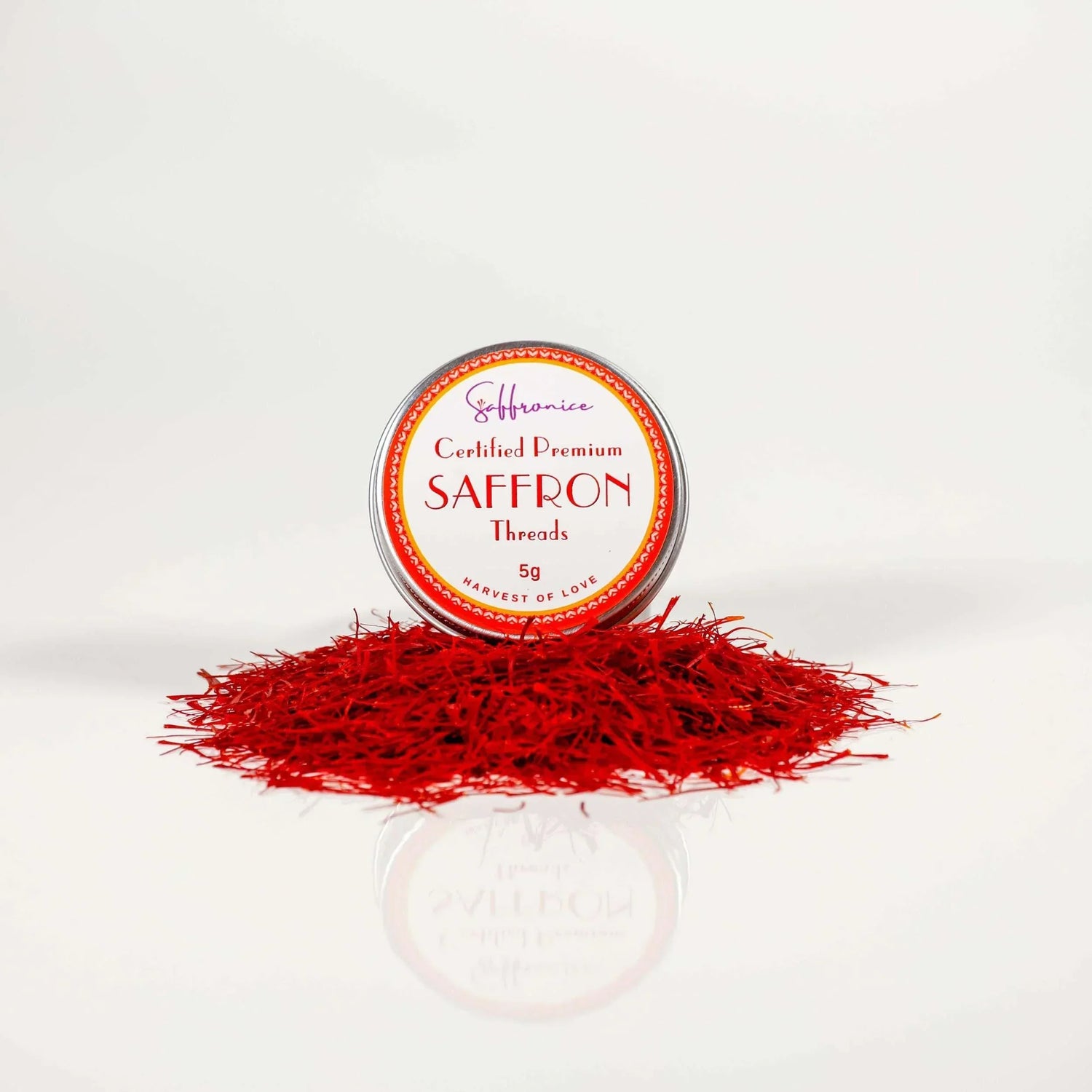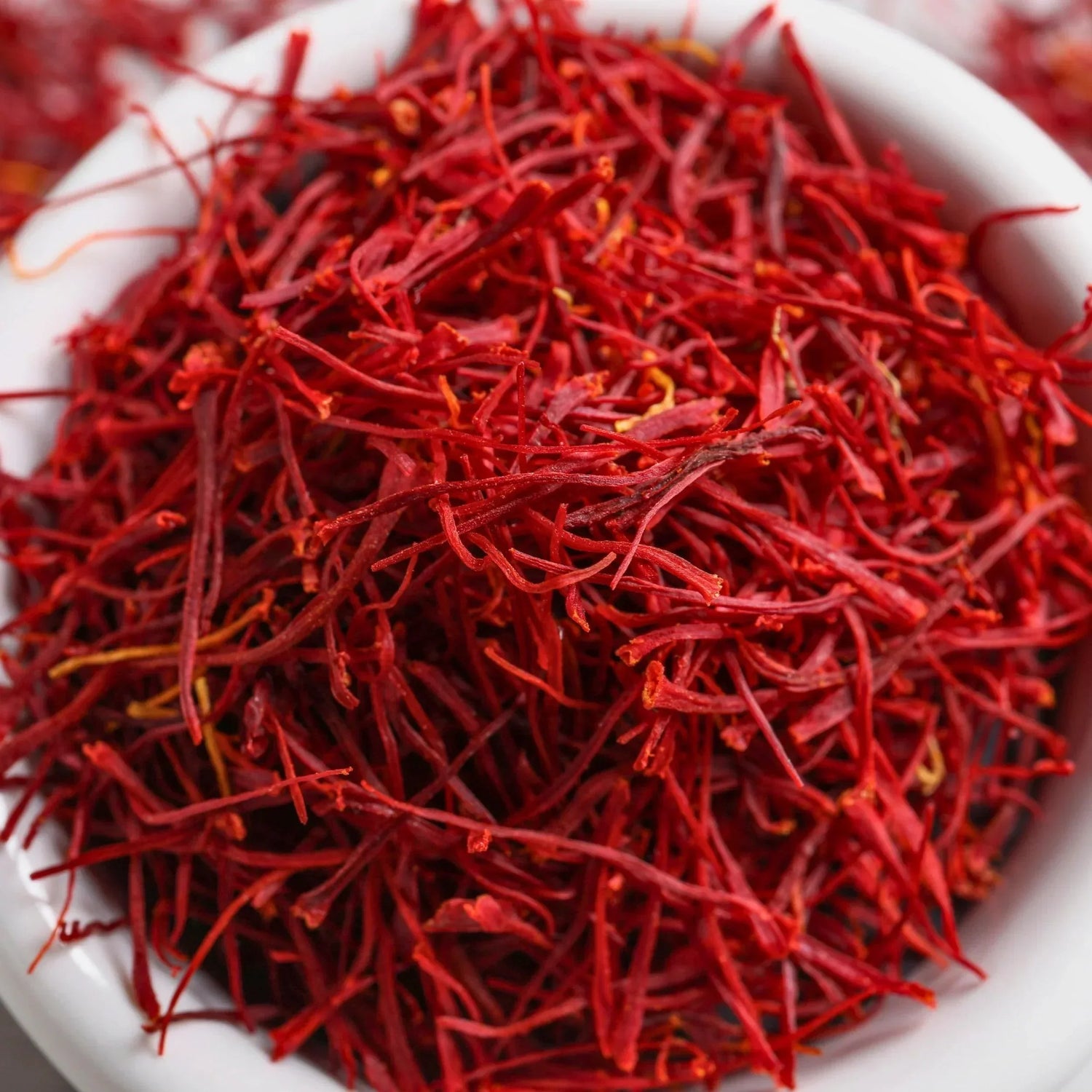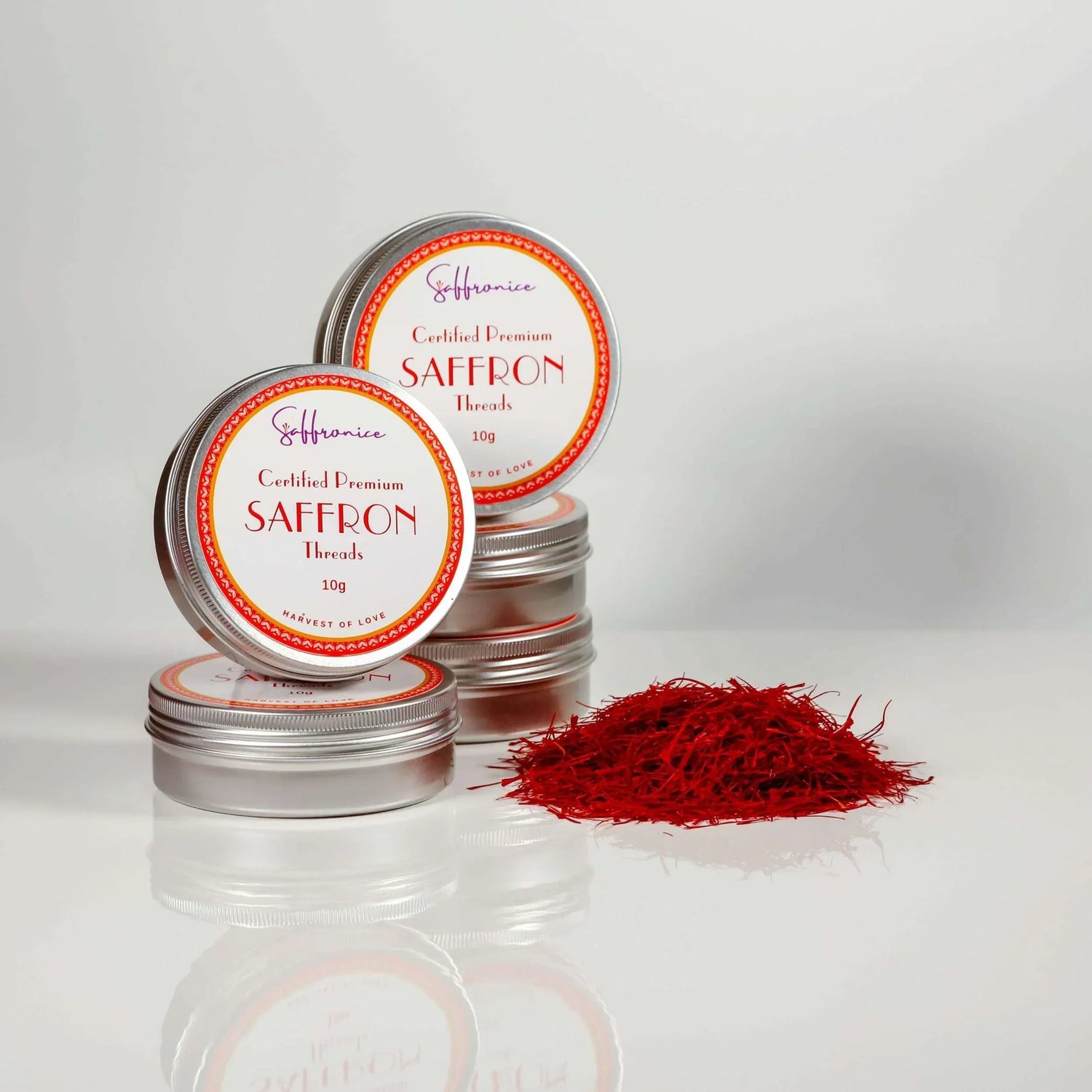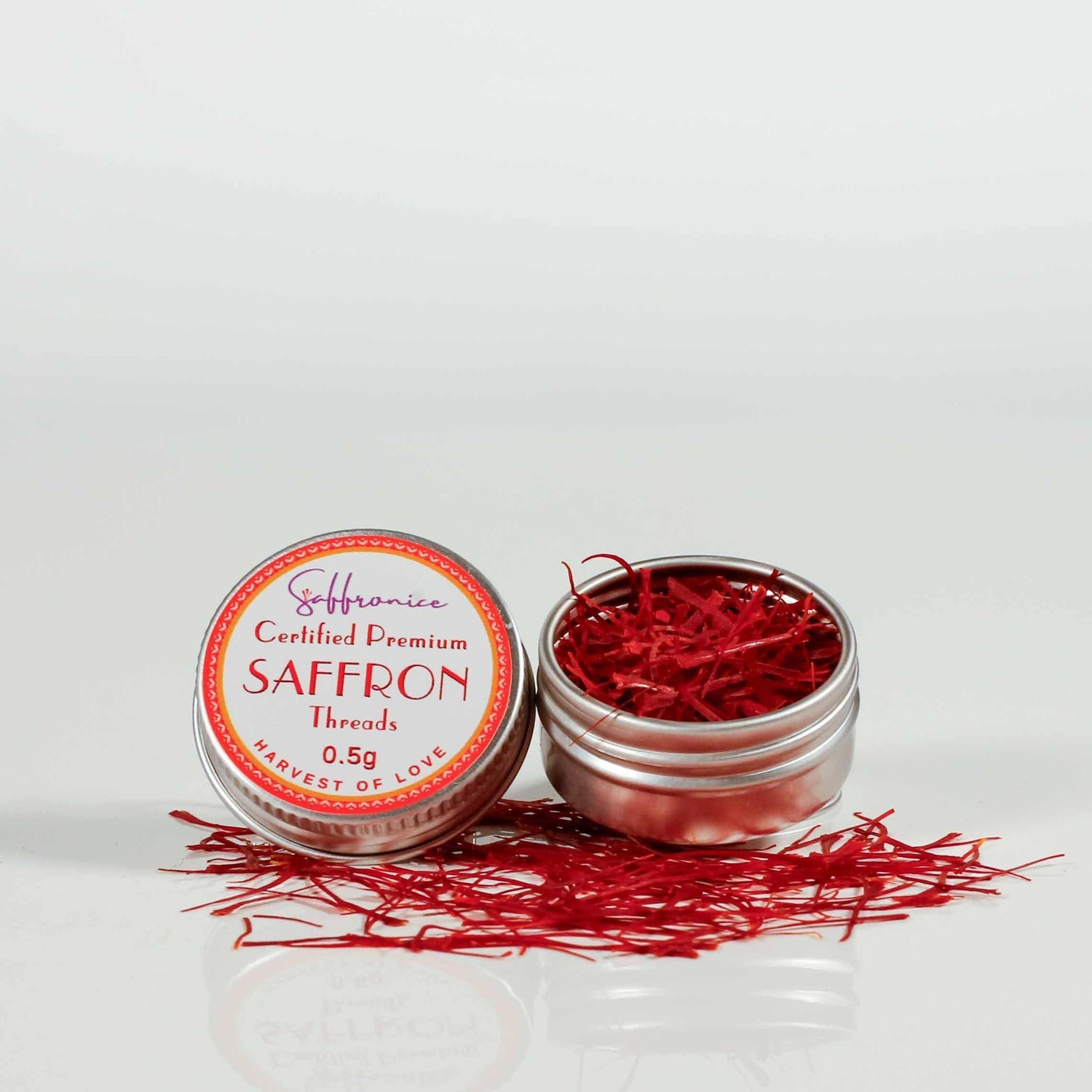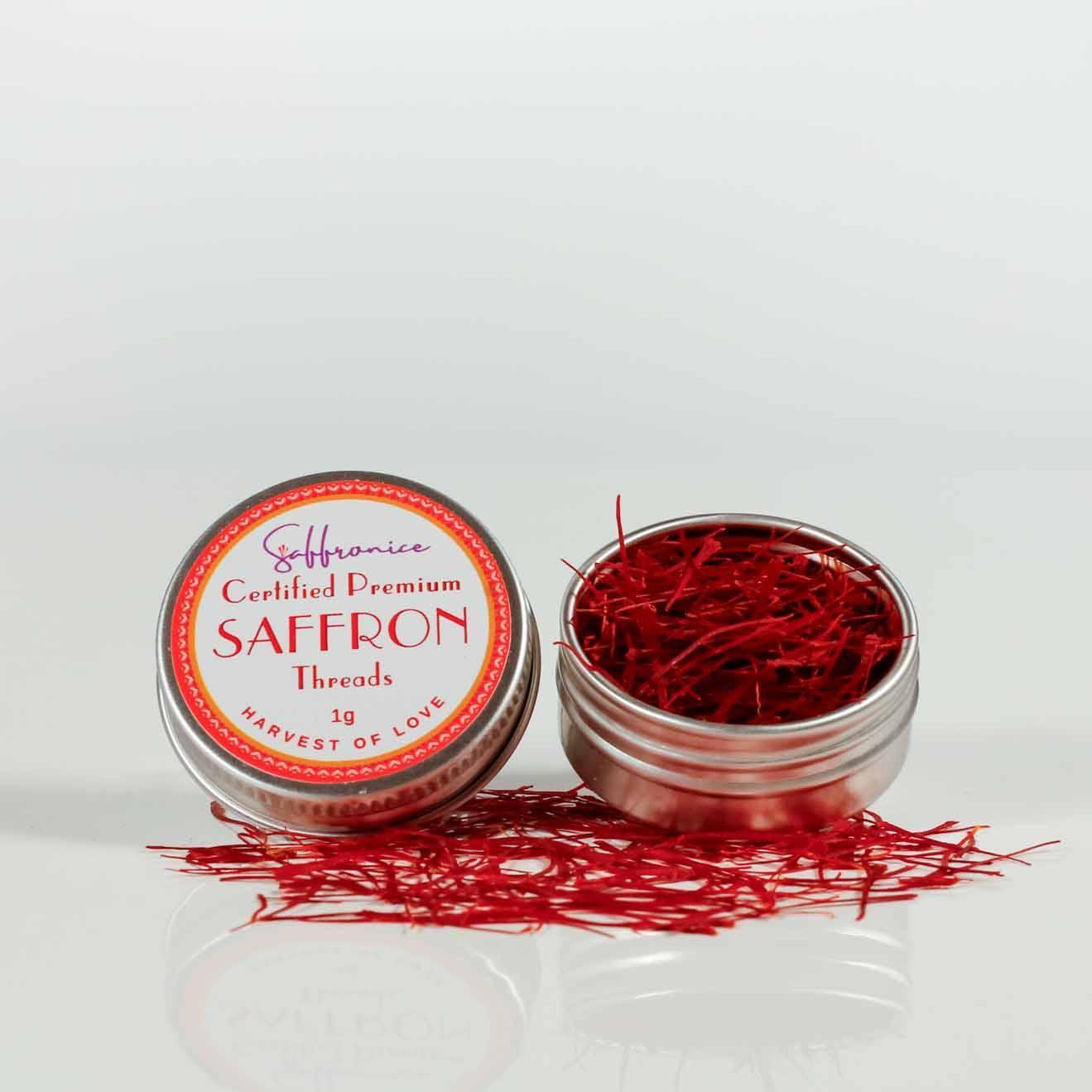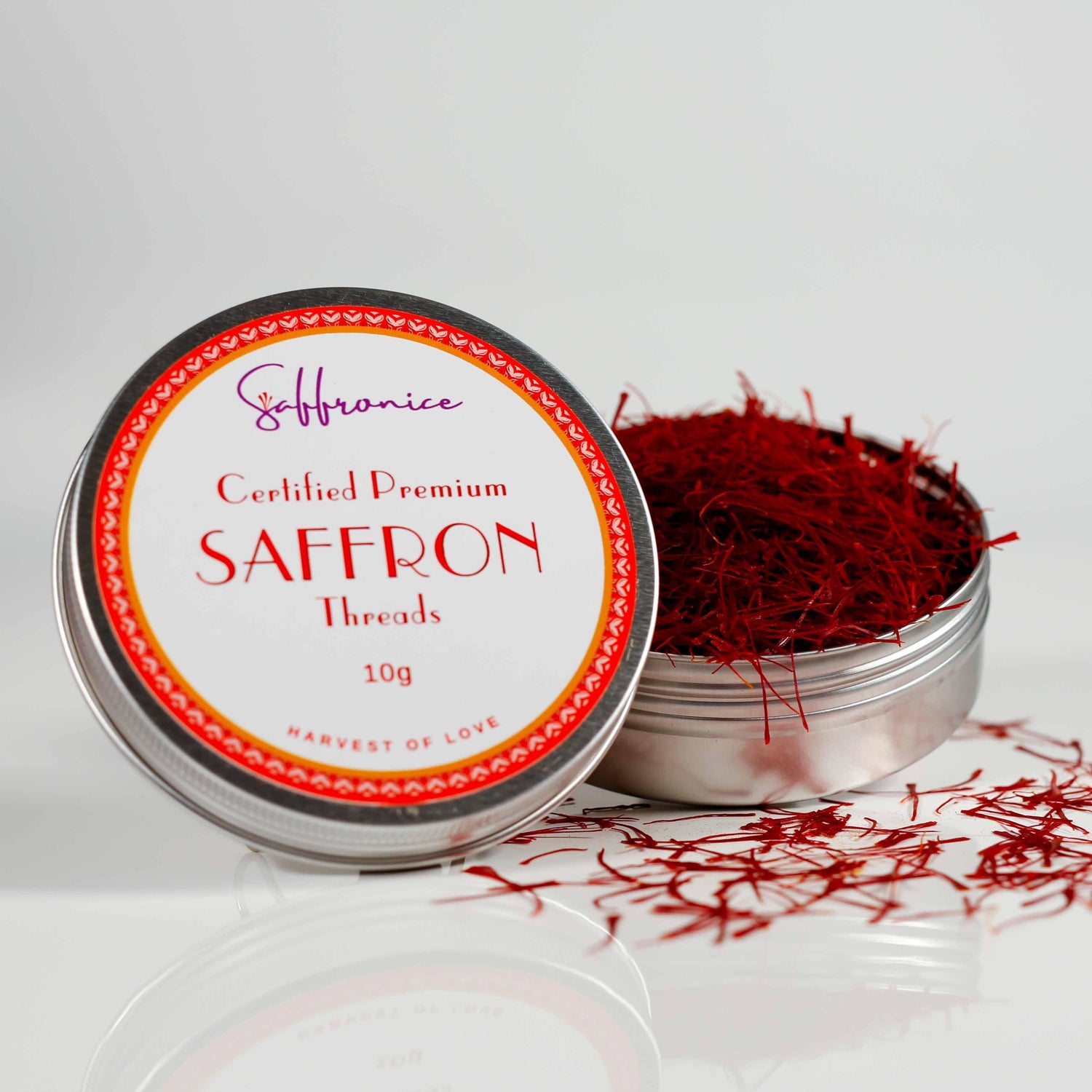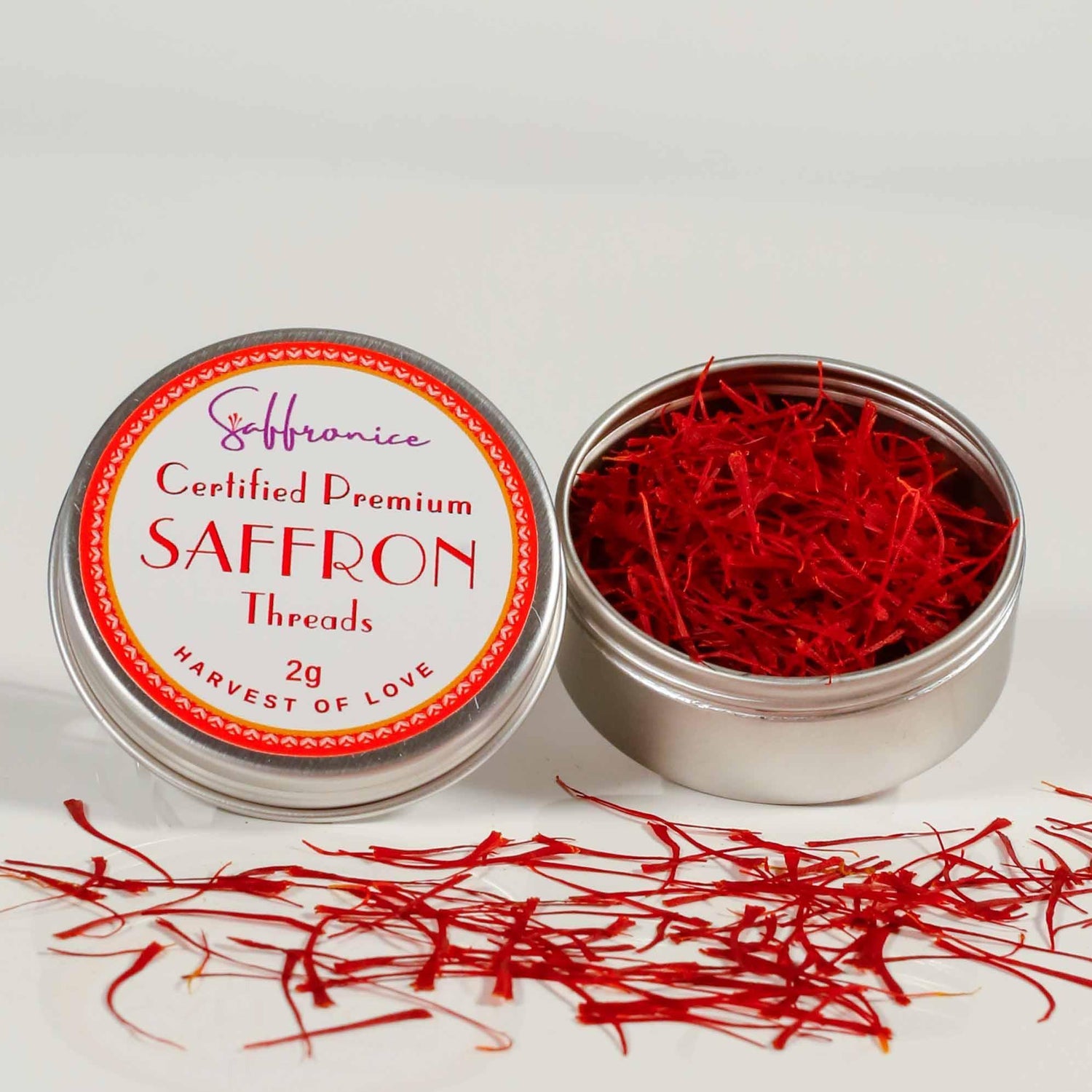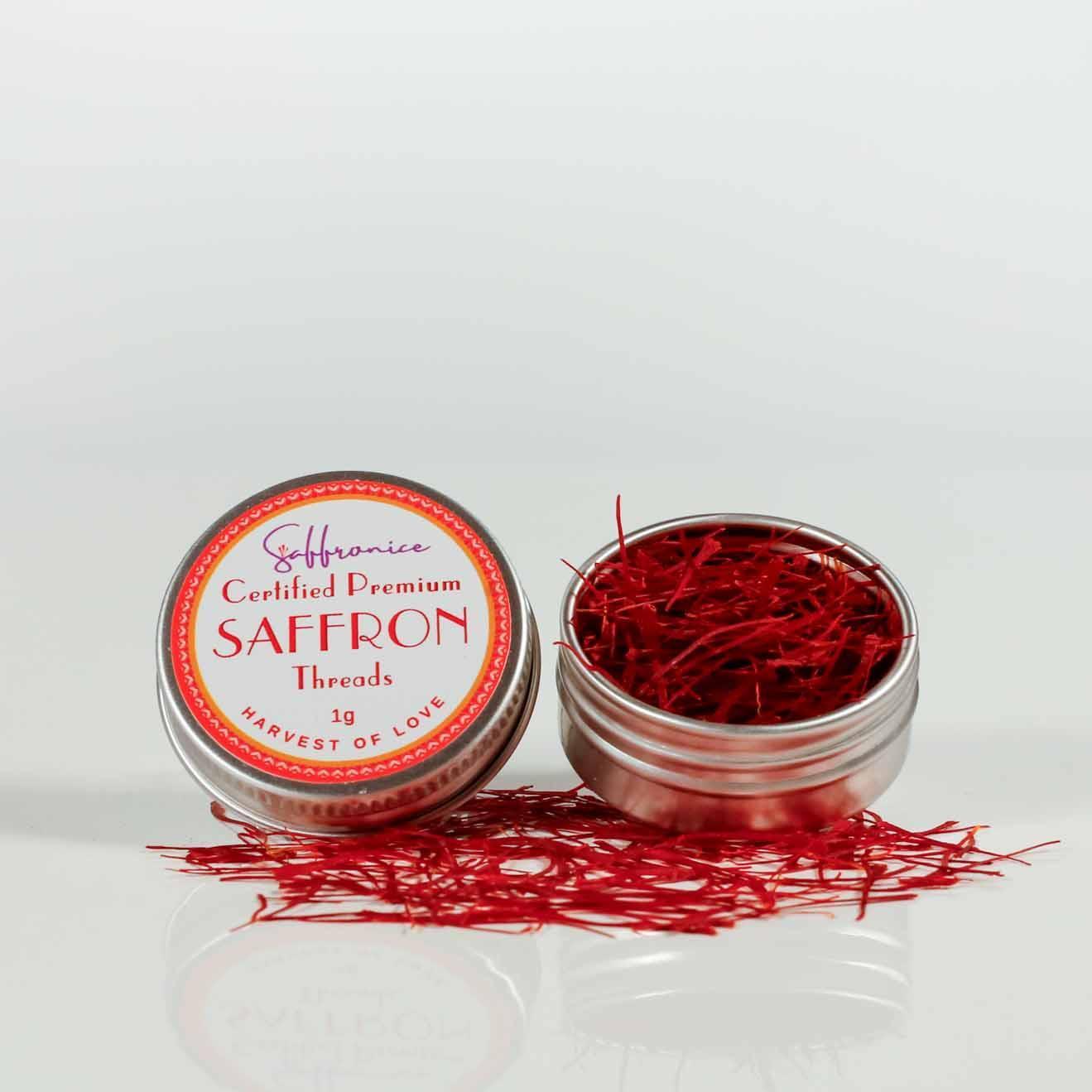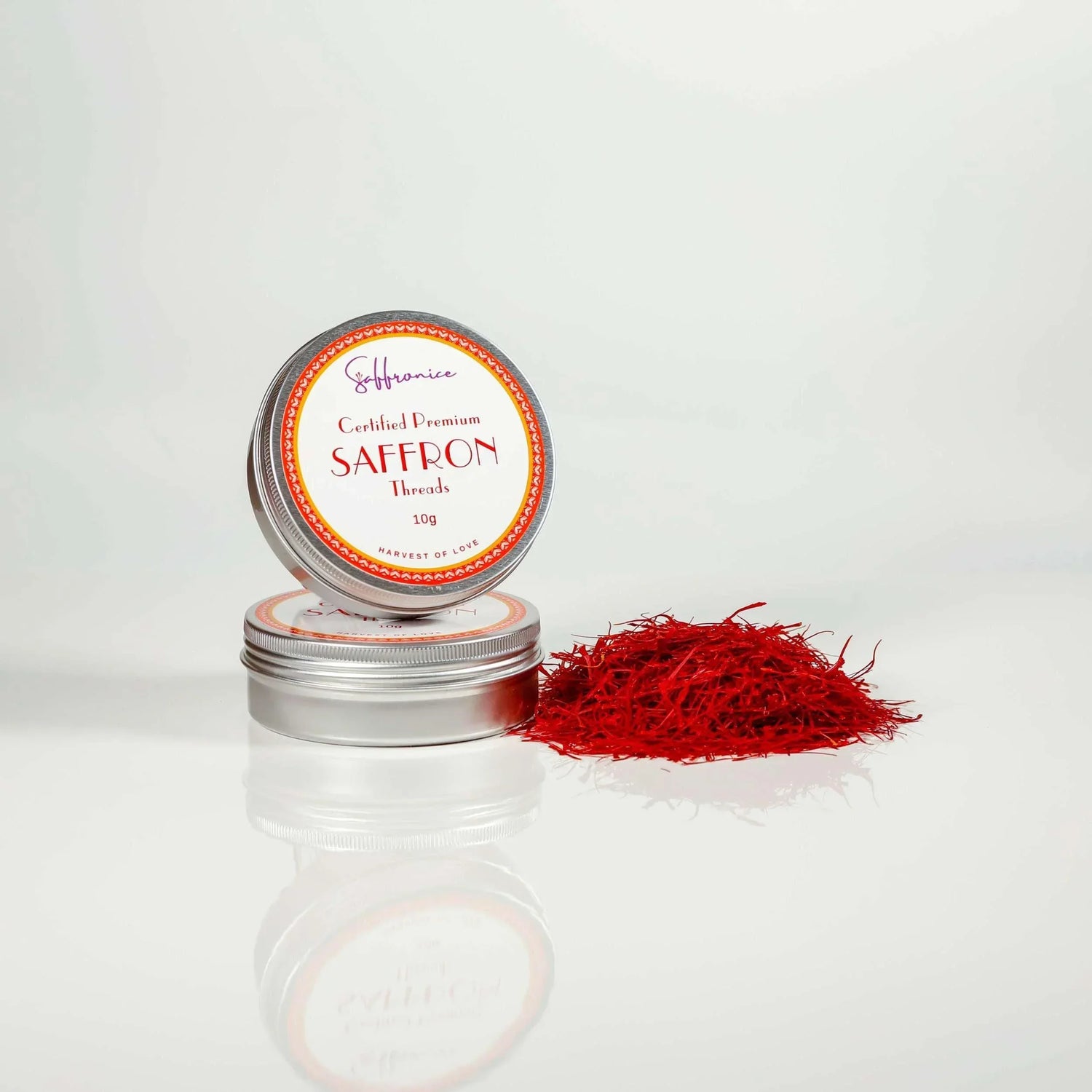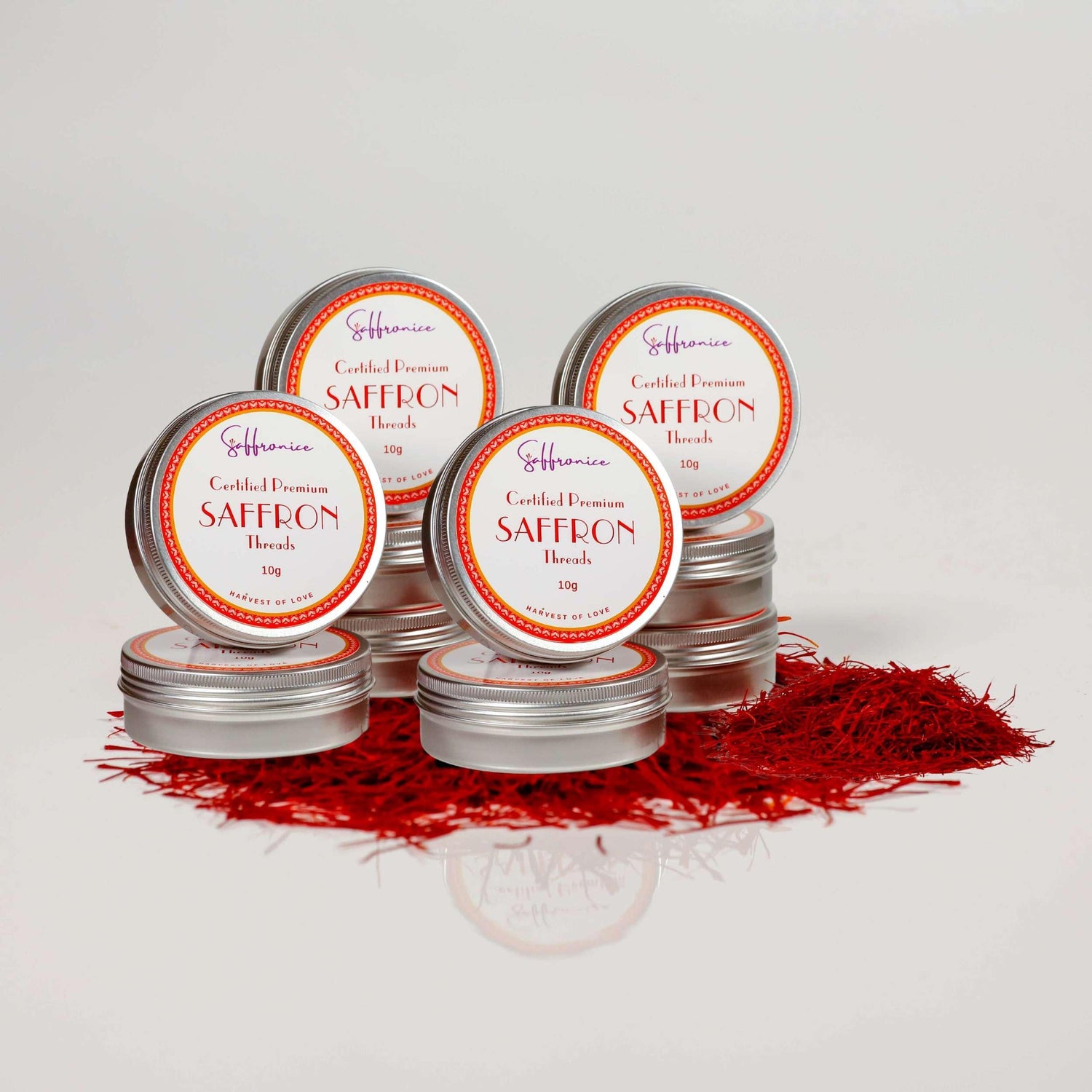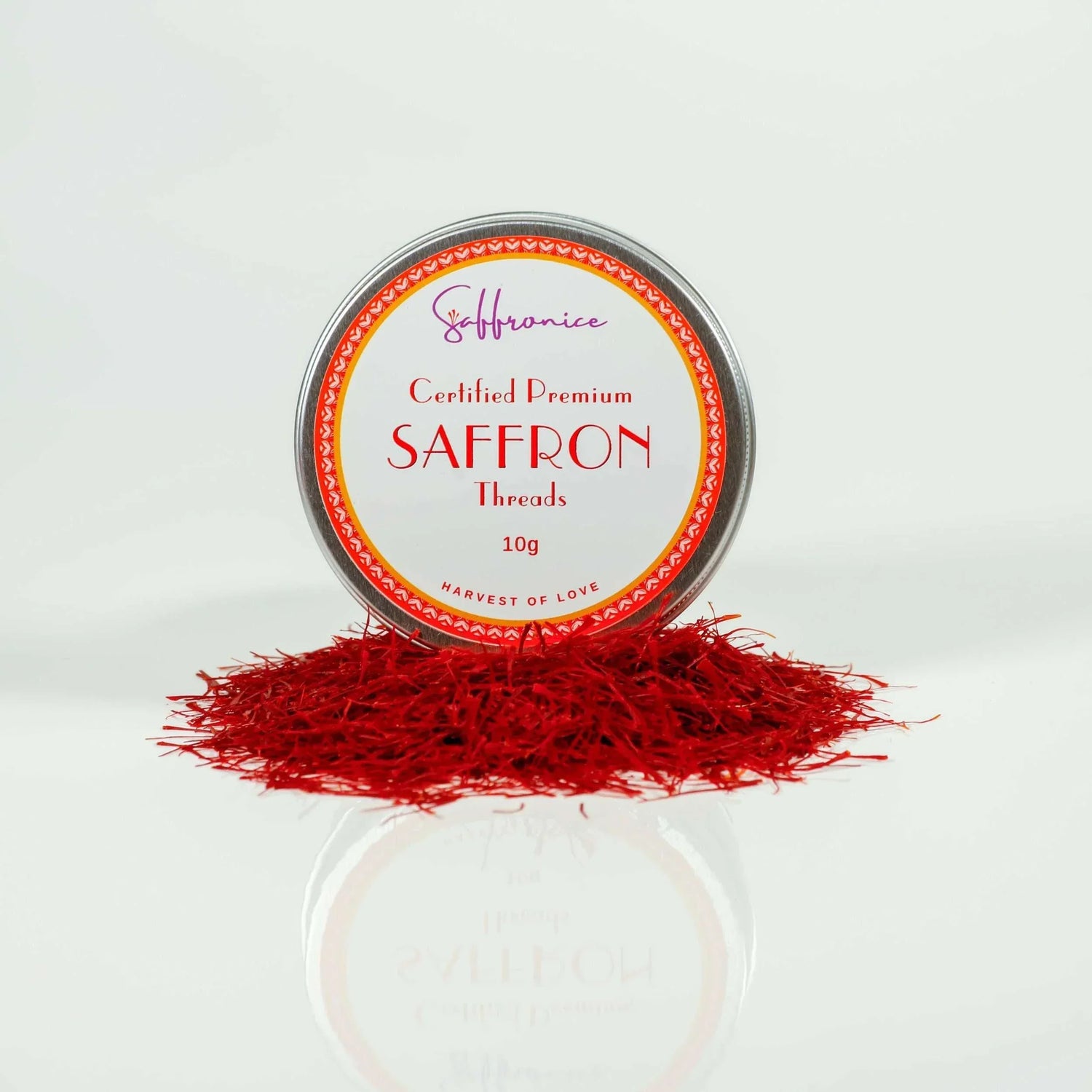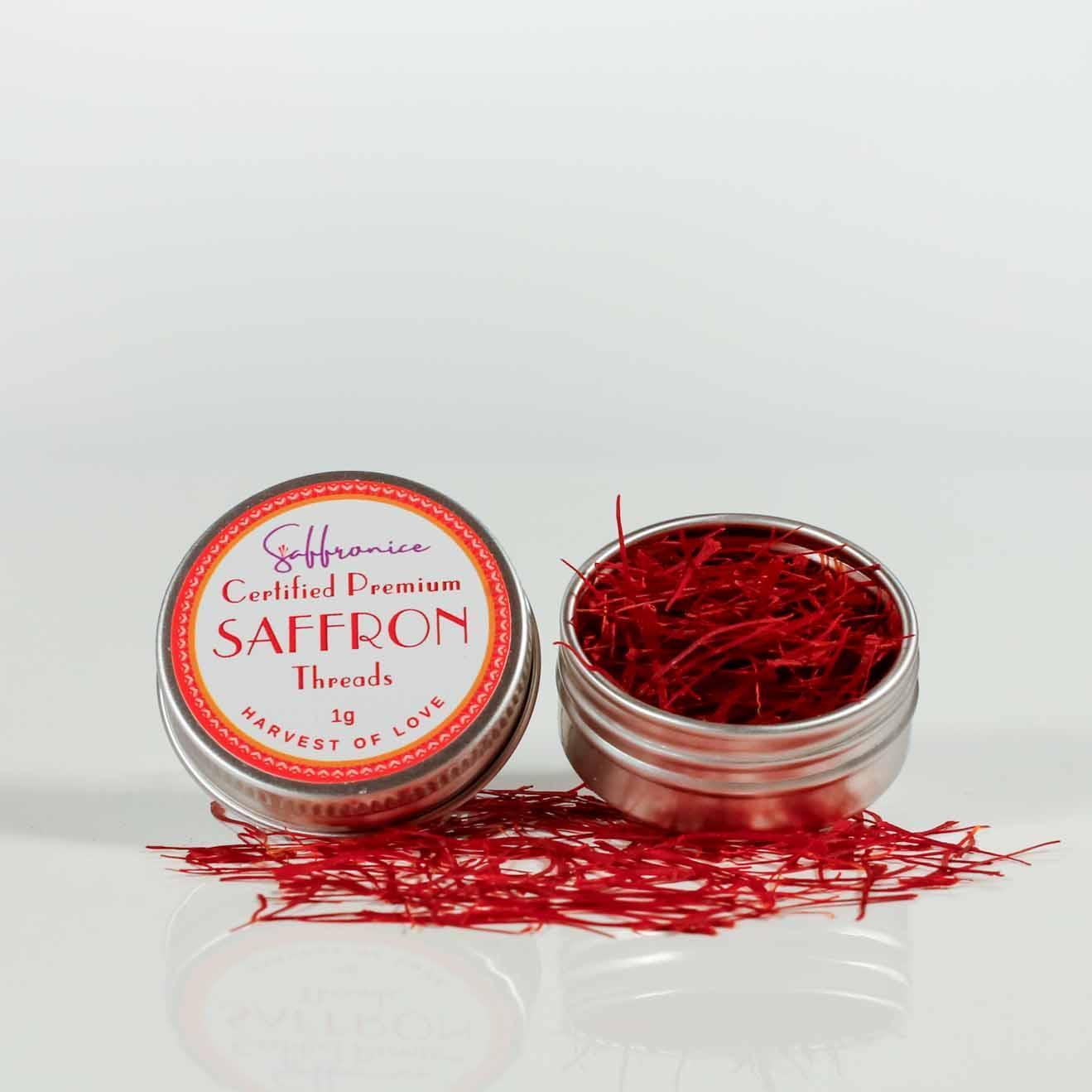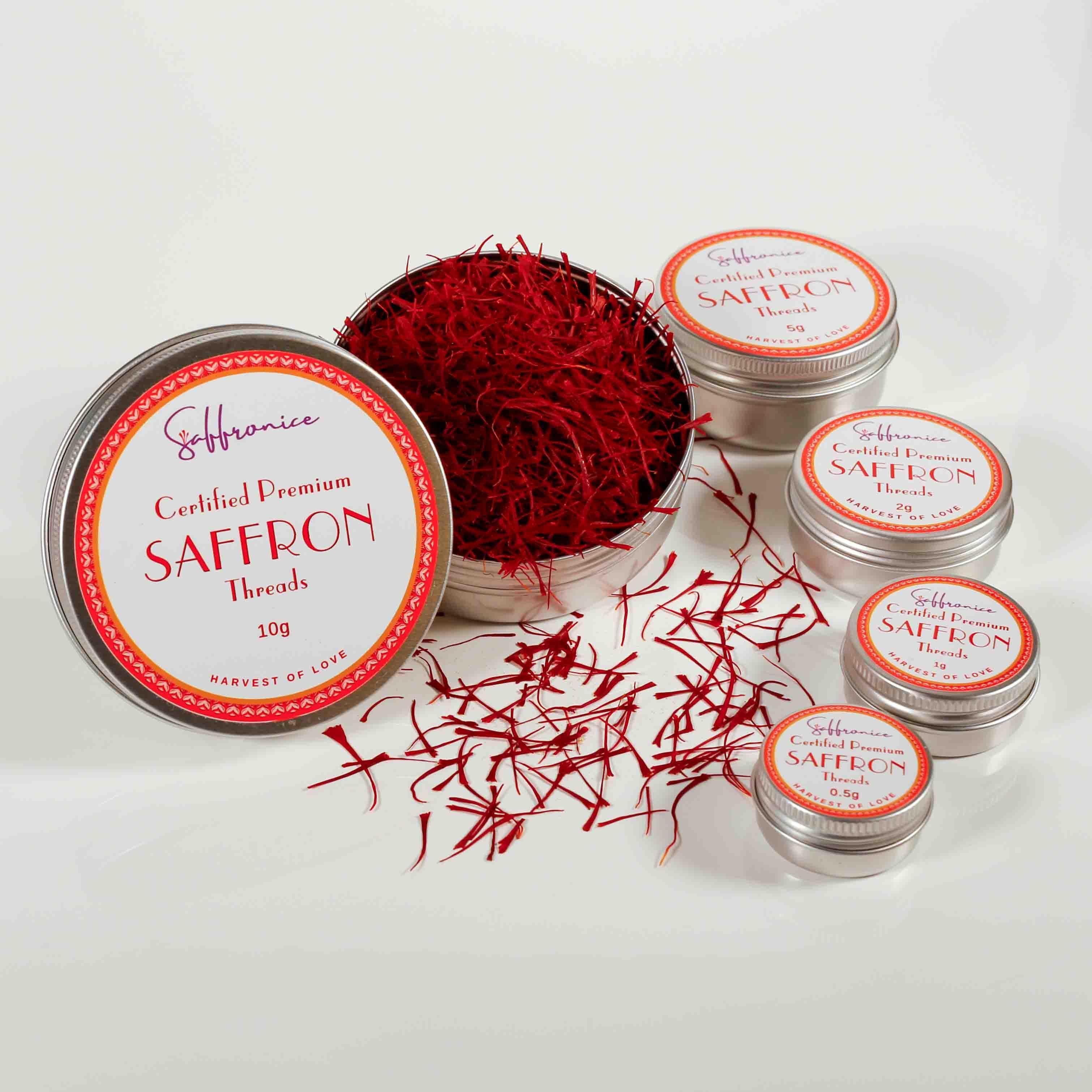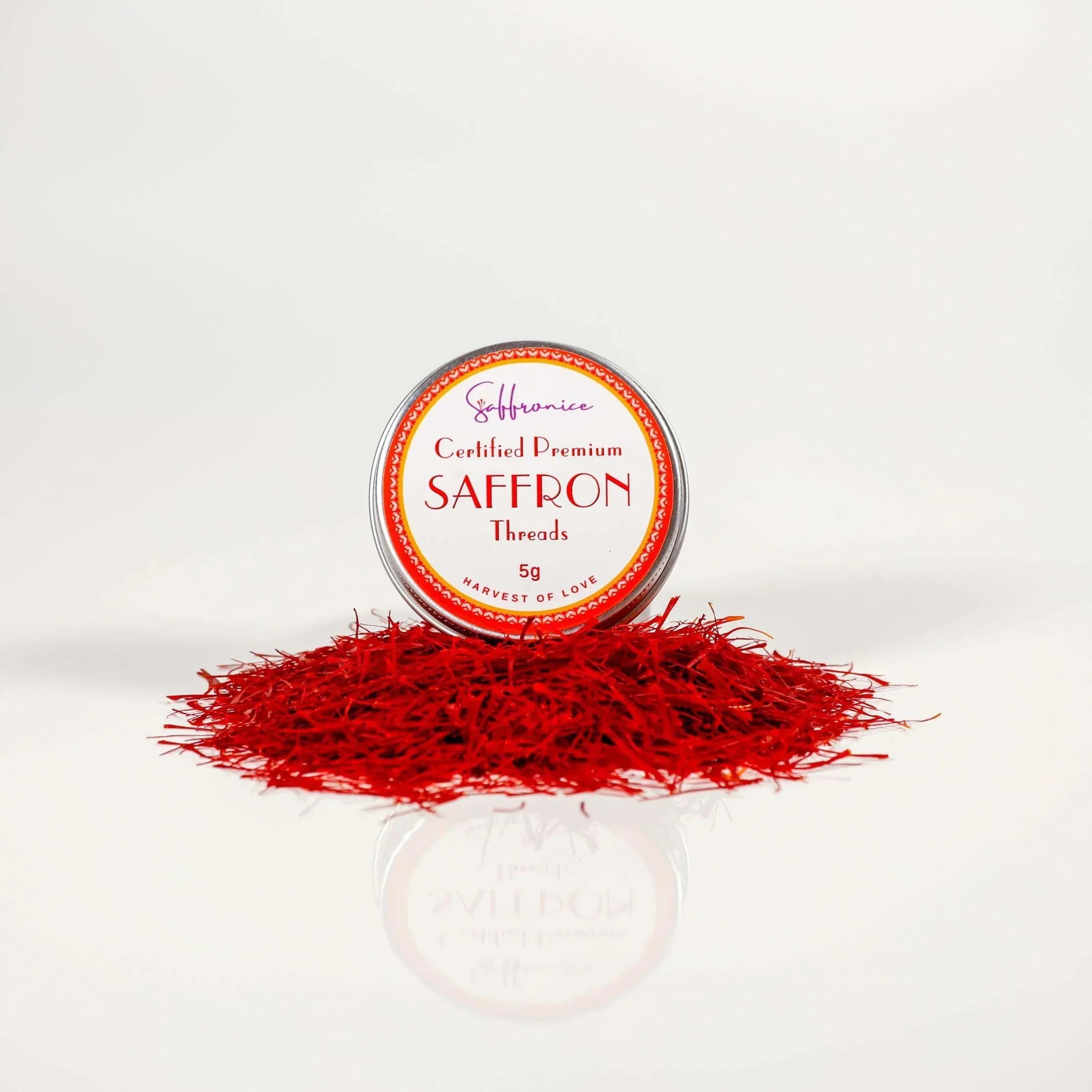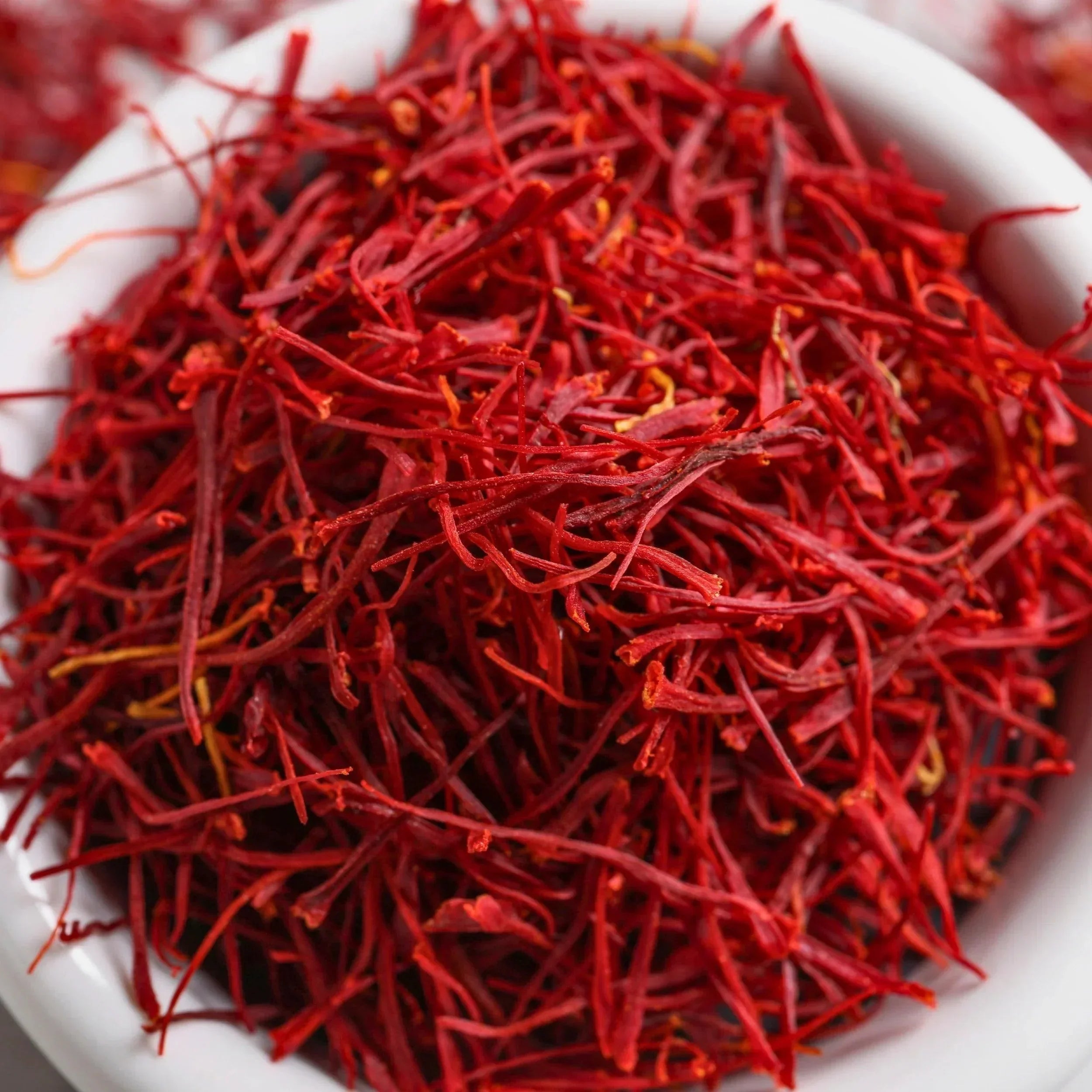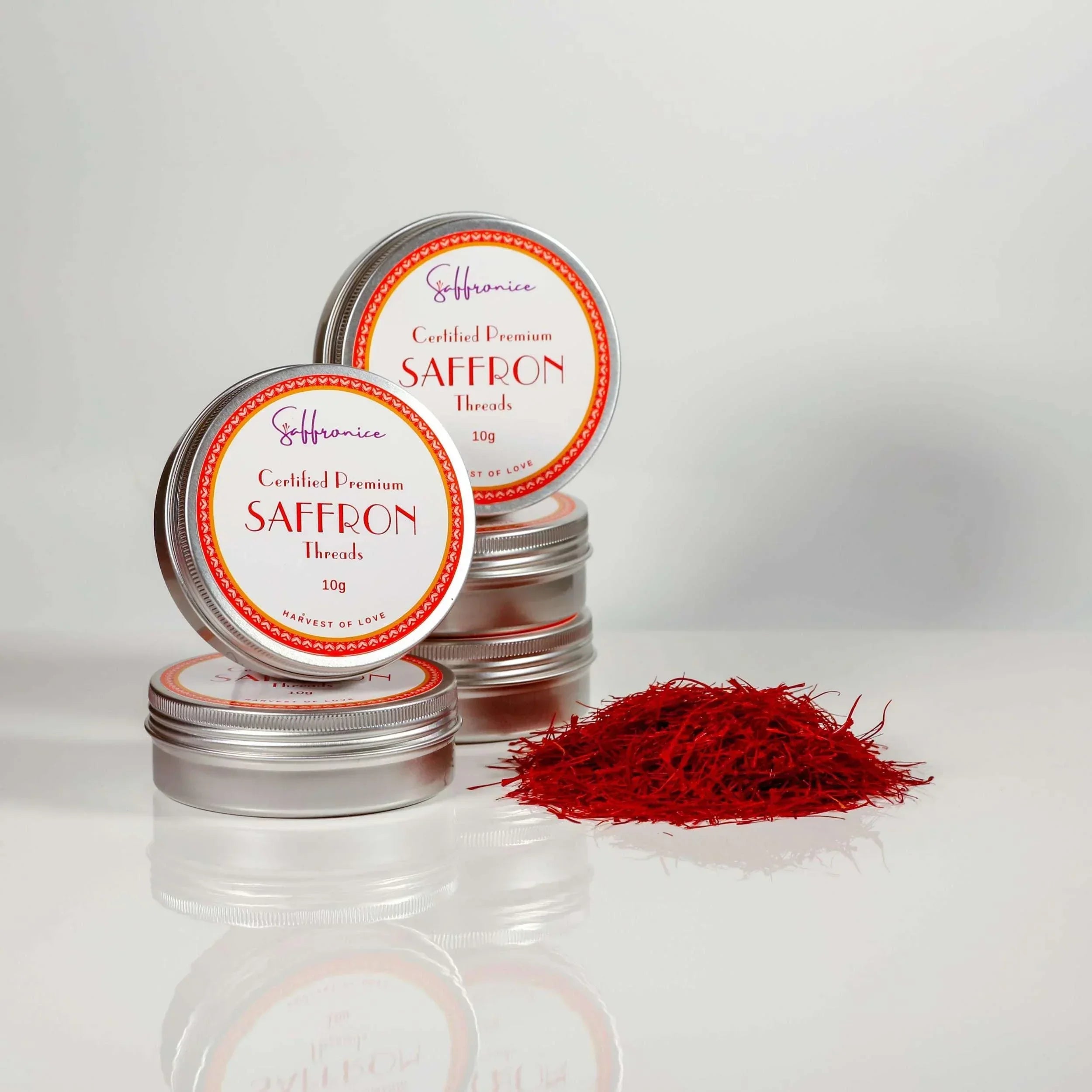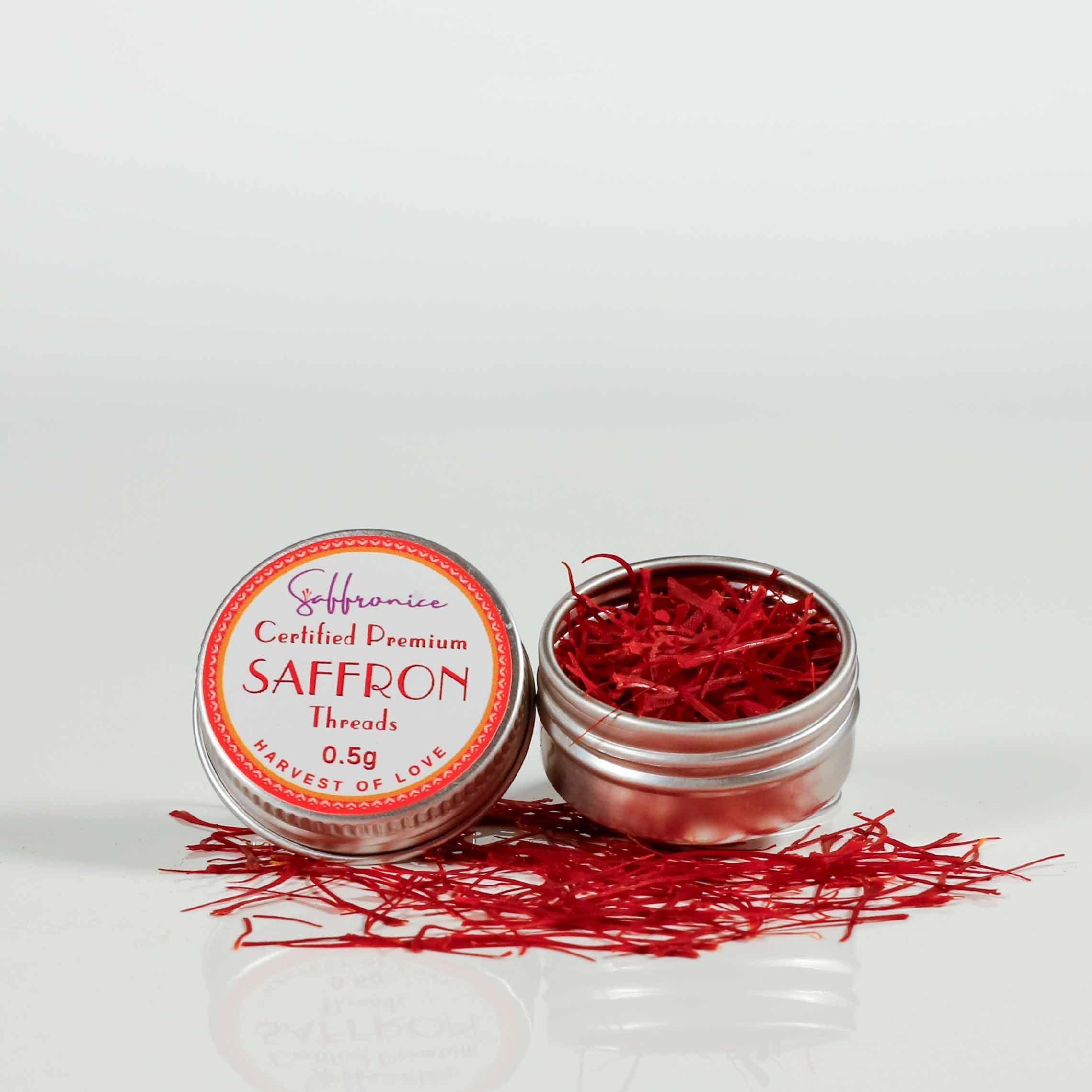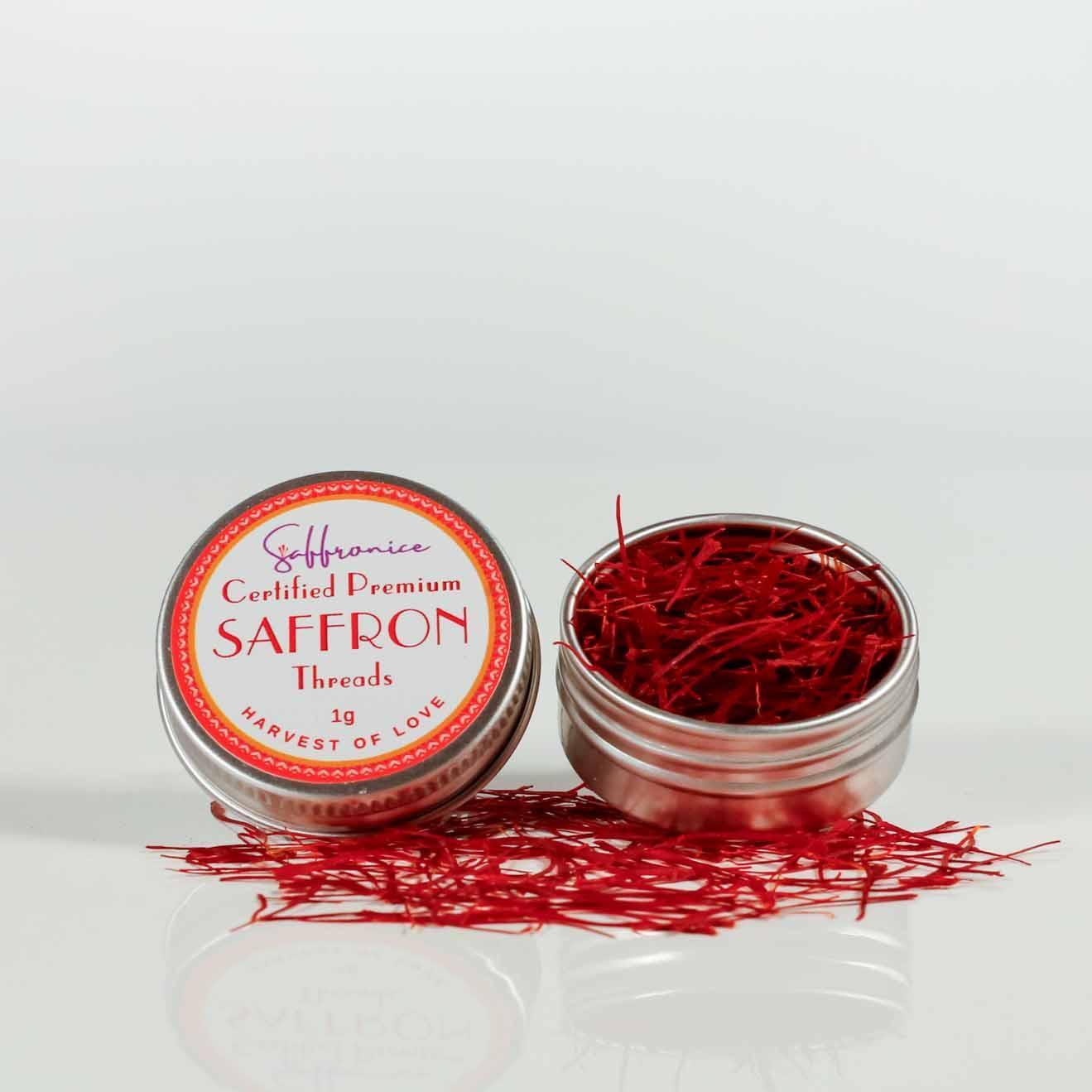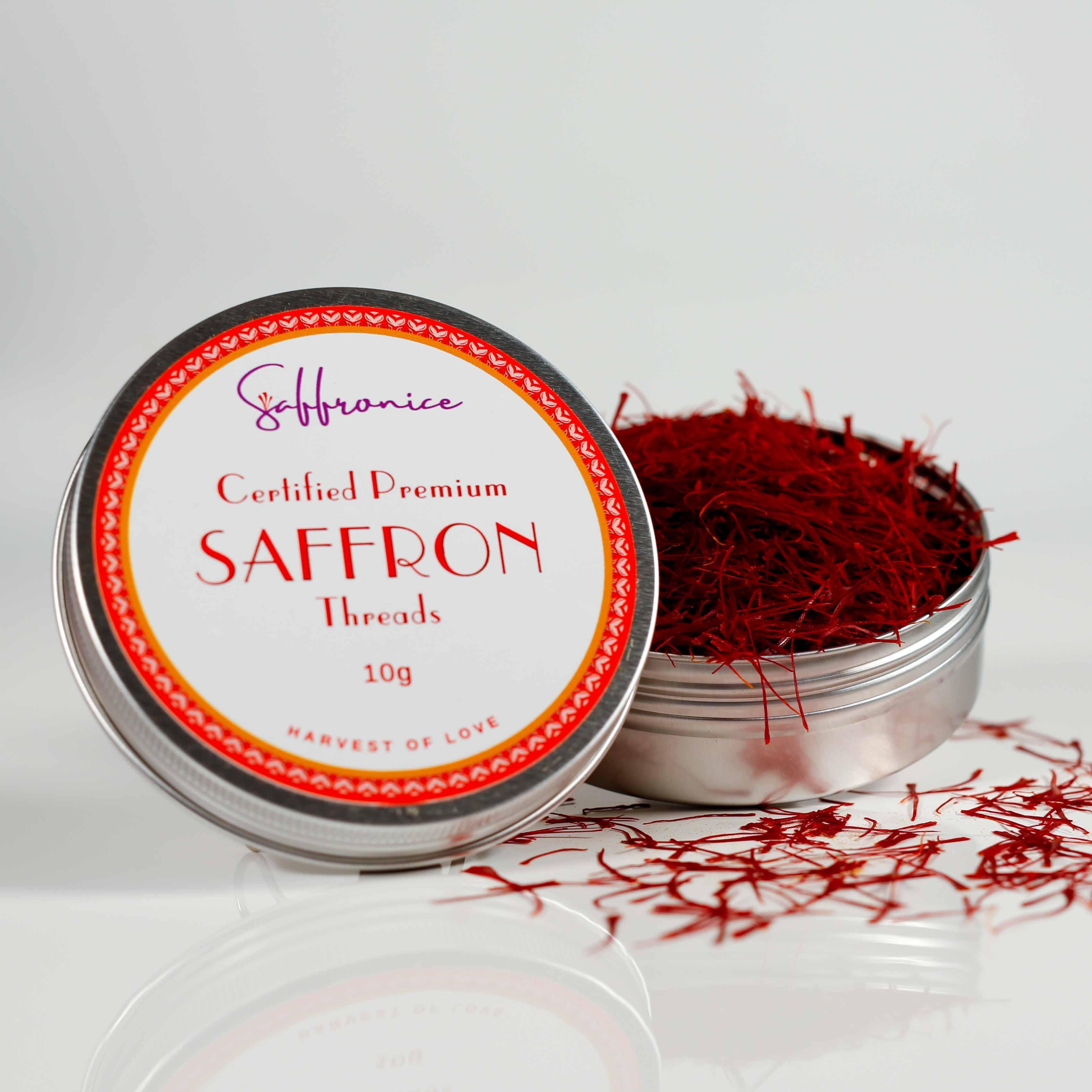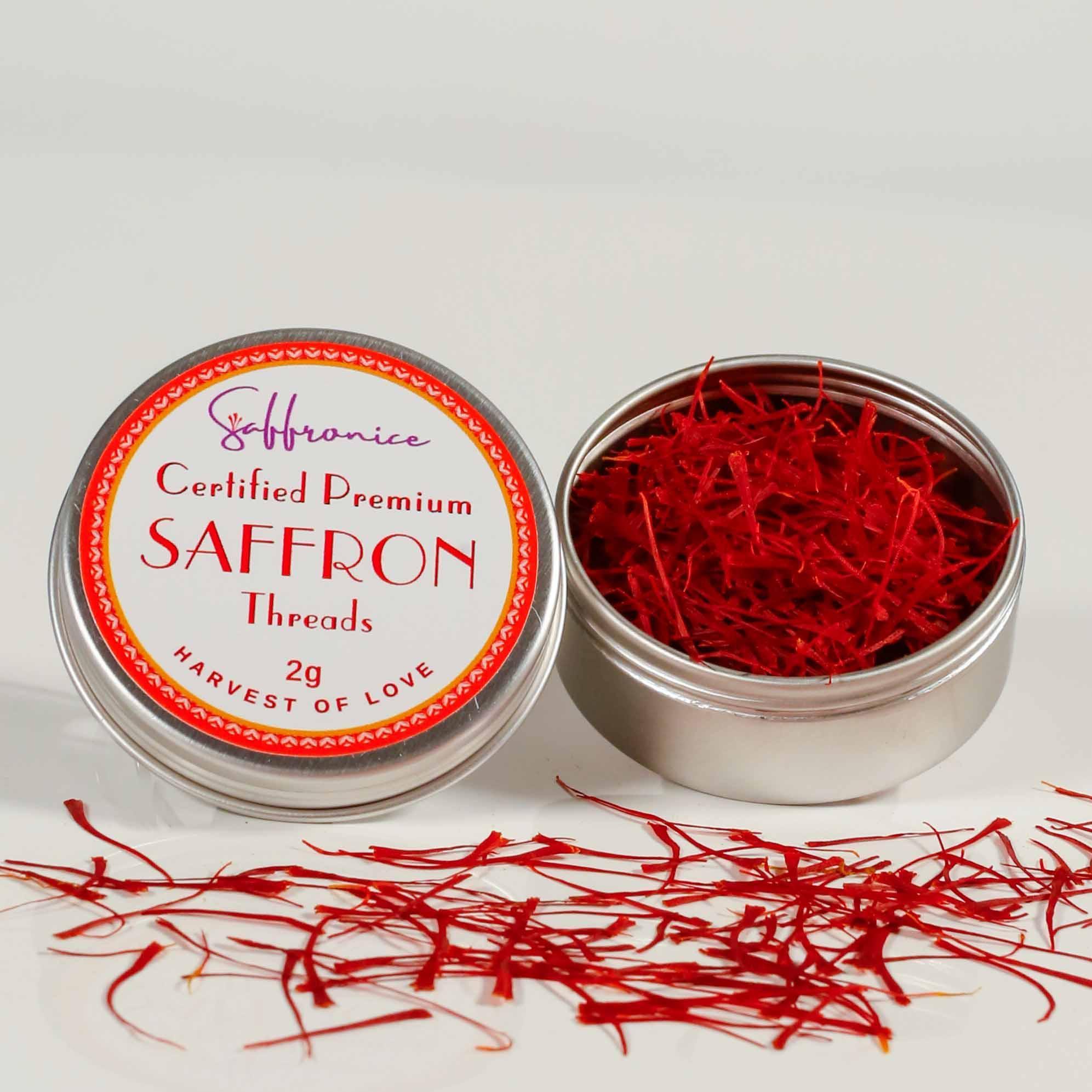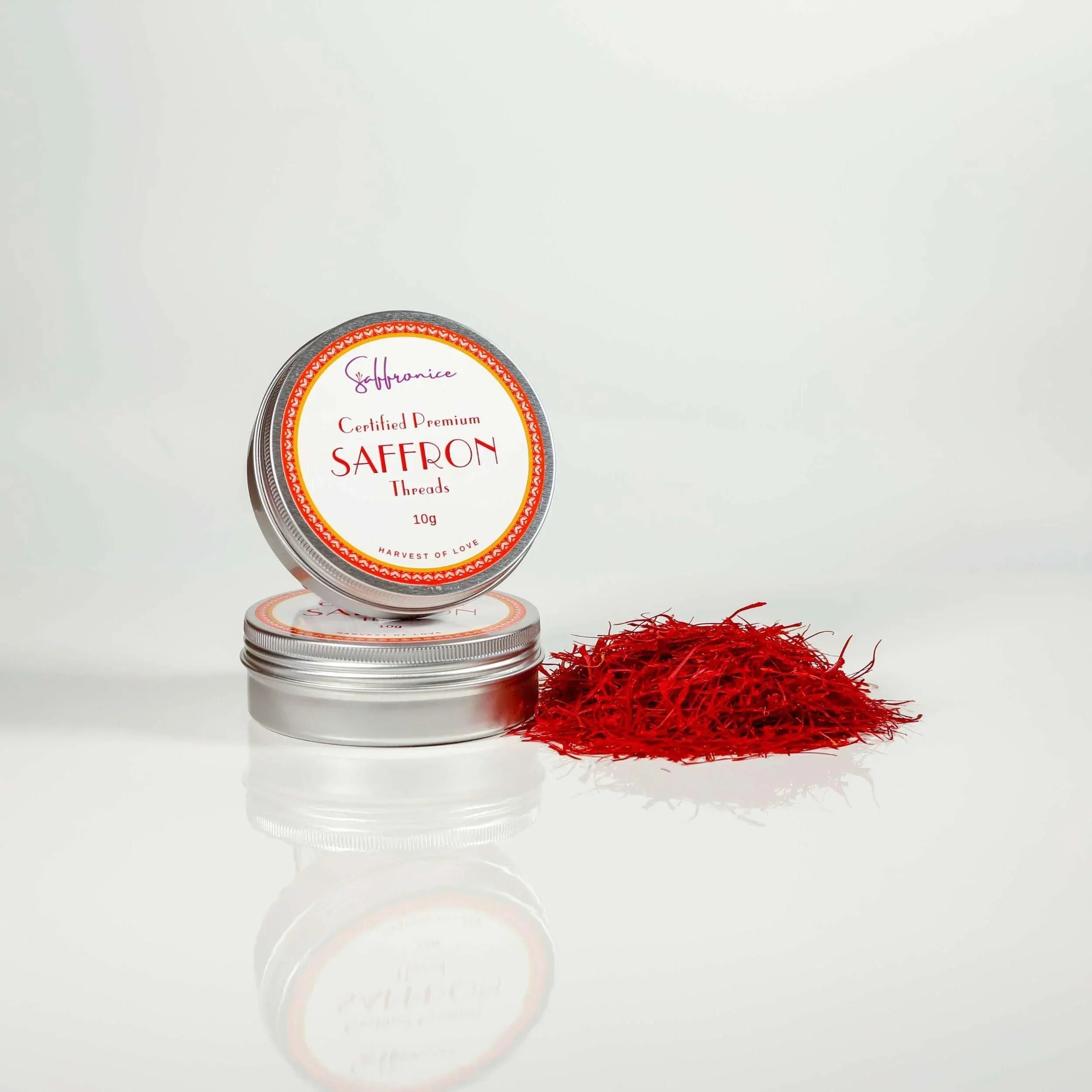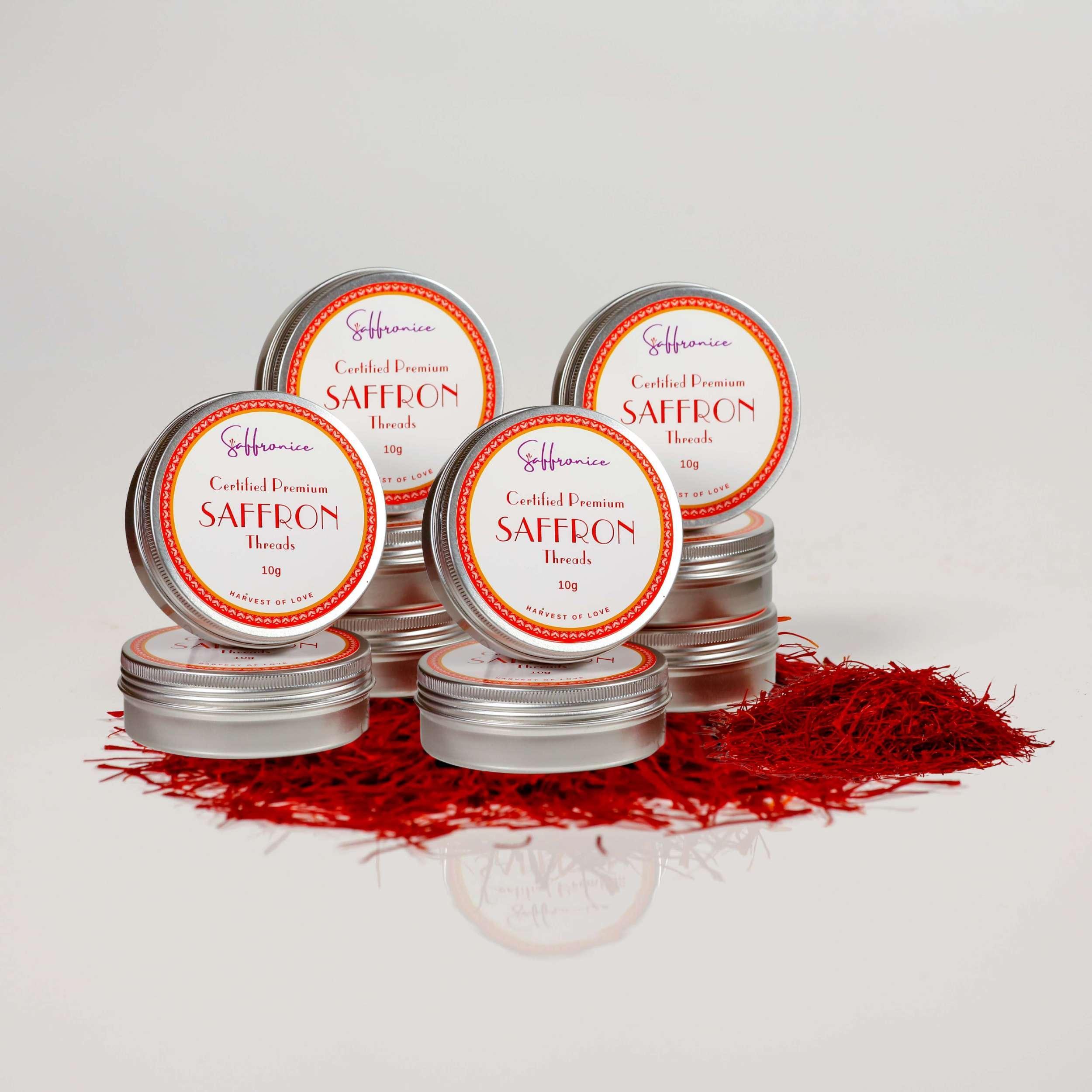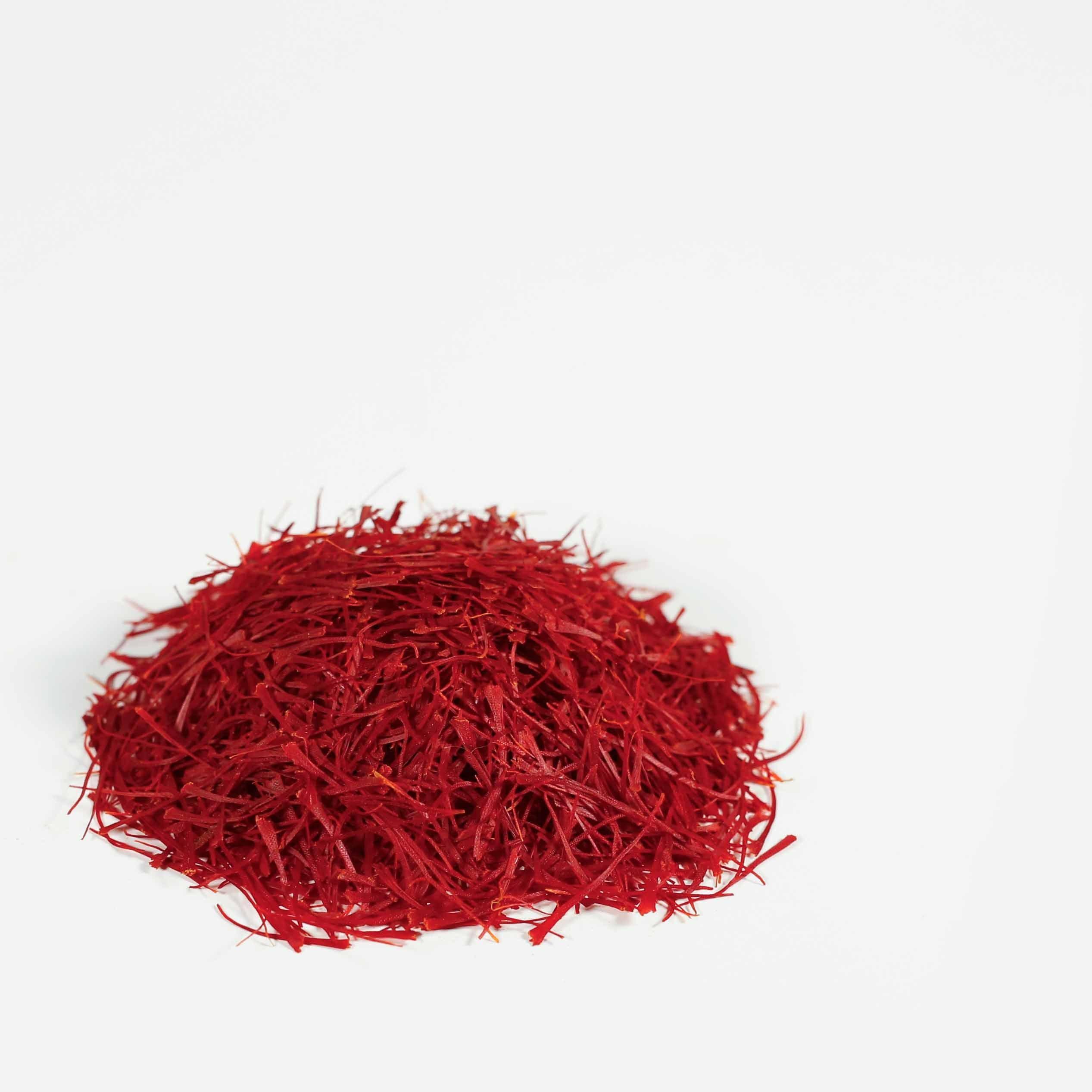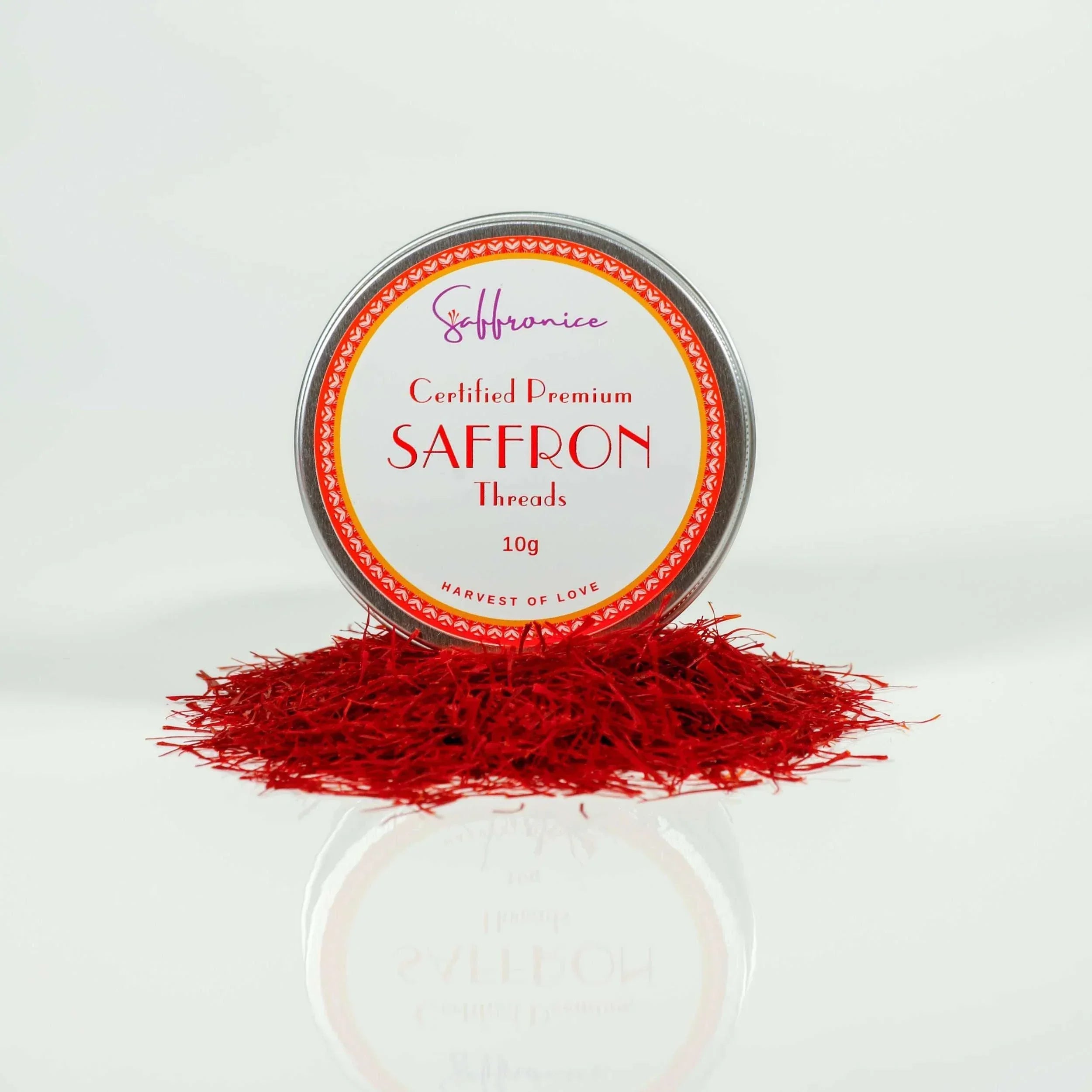A Costly Spice or a Costly Mistake?
Imagine splurging on saffron, only to discover you’ve been sold counterfeit saffron from the bargain bin—a dyed thread masquerading as authentic saffron. Falling victim to saffron fraud is more common than you think, with imposters selling cheap saffron imitations of this premium spice.
In this guide, we’ll help you avoid getting ripped off by saffron scams and show you how to treat yourself with high-quality saffron that’s worth every penny.
We’ll cover:
- The signs of saffron adulteration
- Reliable saffron testing methods
- Potential saffron substitutes for those times when genuine quality is out of reach
Whether you’re a seasoned cook or new to the world of spices, understanding saffron authenticity is crucial to ensuring that your culinary experiences are truly exceptional.

What is Saffron?
Saffron, often referred to as the golden spice, is the world’s most expensive spice, derived from the Crocus sativus flower. Each flower produces only three tiny red stigmas, which are handpicked and dried to create the delicate threads we know as saffron. This high-end spice is prized for its unique aroma, vibrant color, and distinctive taste.
Saffron has a rich history and has been used for centuries in various dishes like Persian rice and Indian biryani, as well as in perfumes and medicines. Its applications extend beyond the culinary world; researchers are exploring innovative uses of saffron in fields like machine learning and microscopy with tools such as Foldscope.
Why is Saffron So Expensive?
The saffron harvesting process is no joke—it takes around 75,000 saffron flowers to produce just one pound of this premium spice. Since it requires handpicking at dawn to maintain quality, the labor-intensive nature of saffron production drives up the cost. This makes saffron a premium product, similar to couture fashion or designer handbags, which is why you won’t find the real deal in the dollar store.
Several factors contribute to saffron's high price:
- The delicate nature of the harvesting process
- The low yield of saffron flowers per acre
- Growing demand in the luxury market
- Concerns about adulteration and synthetic safranal in lower-quality products
However, there is hope for saffron production as advancements in technology such as artificial intelligence and biotechnological methods are being explored to optimize the process and potentially reduce costs while maintaining quality. But where there’s a luxury market, scammers are never far behind.
The Saffron Scam: Common Tricks from Fraudsters
Counterfeit saffron is like buying a generic product that’s dressed up to look designer—it might look good at first, but it’s not going to hold up. Scammers cut corners by using these fake saffron techniques:
- Saffron adulteration: Adding turmeric in saffron, marigold petals in saffron, or safflower as saffron substitute to bulk up the threads.
- Saffron substitutes: Passing off dyed corn silk or beetroot fibers as authentic saffron.
- Fake packaging: Imitating well-known brands to trick buyers with counterfeit saffron packaging.
- Moisture tricks in saffron: Coating the threads in sugar or adding water to increase the product’s weight.
It’s easy to fall for these scams if you’re not careful. Remember: when it comes to saffron, you get what you pay for. That suspiciously cheap saffron might just be a gamble you’ll regret. Stay vigilant against saffron fraud and consider saffron testing to ensure quality and authenticity.

How to Spot Fake Saffron: Know the Difference
Don’t get conned by saffron duds—here’s how you can tell authentic saffron products from knock-offs:
- Color: When identifying authentic saffron, note that real saffron is deep red with slightly orange tips. If it’s all one bright color, it’s probably a fake. This saffron color test is essential for finding ways to test saffron quality at home.
- Aroma: Genuine saffron smells floral and earthy. If it smells like chemicals or has no scent at all, it’s not authentic. Consider doing a saffron aroma test to ensure its legitimacy.
- Taste: Real saffron is slightly bitter, not sweet. A sugary taste usually means it’s been tampered with—try this saffron taste test to confirm its authenticity.
- Water Test: For the water test for saffron authenticity, put a thread in warm water—authentic saffron releases color slowly, turning the water a golden yellow. Fake saffron bleeds its color instantly or stains the water red.
By mastering these techniques on how to spot fake saffron, you can enjoy the exploring benefits of authentic saffron with confidence.
The Consequences of Buying Fake Saffron
Buying fake saffron can have serious consequences that go beyond just losing money. It can also be dangerous to your health. Cheap saffron isn't just a scam—it's often mixed with lower-quality saffron that has been treated with harmful substances like lead-based dyes. These chemicals can have severe effects on your health. Even if the fake saffron isn't toxic, it's still a waste of money because it doesn't have the same flavor, aroma, or health benefits as genuine saffron.
Health Risks of Adulterated Saffron
- Contains harmful substances like lead-based dyes
- Can have devastating effects on your well-being
- Lacks the flavor, aroma, and essential health benefits of authentic saffron
Financial Implications of Buying Fake Saffron
- Seems like a bargain at first
- Ends up being worthless in the long run
- Wastes money that could be spent on quality saffron
It might be tempting to buy cheaper saffron, but in reality, it's not worth it. In the long run, trying to save money on saffron will only result in getting a product that has no value. The quality of saffron is heavily influenced by where it comes from, so always make sure to buy from trusted sources. Remember the saying "invest in yourself"? This applies to saffron too—spending money on high-quality saffron can greatly improve both your health and cooking skills.
Importance of Geographical Origin in Saffron Quality
- The place where saffron is grown affects its quality
- Look for reputable sources to ensure you're getting genuine saffron
Investing in quality saffron not only makes your dishes taste better but also allows you to discover the health benefits that come with authentic saffron—benefits that inferior products simply don't offer.
Remember, it's the natural compounds found in real saffron, such as safranal, that give it its unique qualities—both in terms of cooking and medicinal properties. Don't let the temptation of cheap saffron jeopardize your health and culinary experience; make wise choices and prioritize authenticity.
Slang Comparisons: Cheap Saffron vs. Expensive Saffron
- Cheap Saffron: This is like the knock-off saffron you find in the bargain bin—generic at best, a scam at worst. Low-quality saffron often lacks the rich flavor and vibrant color of authentic saffron, making it a prime candidate for saffron fraud.
- High-End Saffron: The designer spice of the culinary world. Premium saffron, like Iranian saffron or Spanish saffron, is like top-shelf liquor—worth the splurge. The high-end saffron benefits include its intense aroma and unparalleled quality.
Buying cheap saffron is a waste of money and a gamble—you never know what you’re getting due to the risk of saffron adulteration. On the other hand, opting for premium saffron is like buying a couture item: worth every penny. If you find yourself saying, “That’s too rich for my blood,” remember that you get what you pay for. When considering saffron quality comparison, always be wary of counterfeit saffron and consider conducting saffron testing to ensure its authenticity.

Where to Buy Authentic Saffron: Avoid the Rip-Offs
When exploring where to buy authentic saffron, it's essential to avoid saffron scams by sticking to reputable saffron sources. Look for ISO 3632 certification, which ensures the quality and purity of the product. Specialty stores or trusted online retailers are your safest bets. Be wary of sketchy sellers offering saffron at suspiciously low prices—remember, if it’s too good to be true, it probably is.
Pro tip: Treat yourself to high-end saffron from regions known for its production, like Iranian saffron, Spanish saffron, or Kashmiri saffron. It may cost more, but you’ll know it’s the real deal—and your dishes will thank you. For those looking to find information on saffron production and origins, these regions are renowned for their high-quality offerings.
Conclusion: Don’t Let the Fraudsters Win
Saffron is a luxury worth savoring, but only if you buy the authentic stuff. The market is flooded with saffron knock-offs and fakes, making it easy to fall victim to scams. To ensure you're making a wise investment, consider these saffron fraud prevention tips:
- always check the source
- look for quality assurance certifications
- be wary of prices that seem too good to be true
With the right knowledge and a little vigilance, you can avoid cutting corners and invest in saffron that’s worth every penny. For a comprehensive approach, refer to our buying authentic saffron guide to understand the key indicators of quality and legitimacy. Remember, true saffron should have a rich color, a distinct aroma, and come from reputable suppliers committed to saffron quality assurance.
Final Tips for Staying Safe
- Don’t be fooled by bargain-bin saffron. You get what you pay for. Low-quality saffron often comes with a hefty price tag for a reason.
- Be cautious of sellers offering cheap saffron—it’s a gamble you don’t want to take. Cheap saffron can be a sign of saffron fraud or counterfeit saffron.
- Look for ISO certifications and buy from reputable sources. These saffron authenticity checks are crucial in safeguarding against saffron scams.
- Treat yourself—high-quality saffron is an investment in your health and cooking. Authentic saffron enhances your dishes far better than any saffron substitutes.
Avoid the shams, scams, and saffron sh*t out there. With this guide, you’re ready to spot the fakes and enjoy the golden spice in all its authentic glory. Remember to consider saffron testing methods if you're ever in doubt about its purity.
Saffron Scams: Don’t Get Saffrond!
Saffron, known for its unique flavor and vibrant color, is often subject to scams due to its high market value. One of the key components that define the quality of saffron is safranal, a compound responsible for its distinct aroma. However, many sellers offer synthetic safranal or adulterated products that lack the genuine qualities of natural safranal.
1. Know the Geographical Origin
When purchasing saffron, it's essential to consider the geographical origin of saffron, as this can greatly influence its quality and authenticity. Regions like Iran and Kashmir are renowned for producing high-quality saffron with rich concentrations of saffrond metabolites.
2. Explore Biotechnological Methods for Testing
To ensure you're buying authentic saffron, consider using biotechnological methods for saffron testing. These advanced techniques can help verify the purity and quality of saffron strands, protecting you from fraudulent products.
3. Embrace Machine Learning Technologies
Additionally, machine learning in saffron authenticity is an emerging field that promises to revolutionize how we assess the quality of this precious spice. By analyzing various parameters such as color, aroma, and chemical composition, these technologies can provide reliable insights into the true nature of saffron.
Stay informed and vigilant to avoid getting saffrond!
Introduction: Understanding Saffron Fraud
Saffron is an expensive spice, and unfortunately, there's a growing problem with saffron fraud. Many people unknowingly buy fake saffron that is actually cheap dyed threads or substitutes pretending to be the real thing.
In this guide, we'll help you understand how to spot saffron fraud and make sure you're buying genuine saffron. By learning about the characteristics of authentic saffron and being aware of common scams, you'll be better prepared to avoid falling for these tricks and get the real deal.
What is Saffron?
Saffron, often referred to as the "golden spice," is renowned for its vibrant color and delicate aroma. This precious seasoning is harvested from the Crocus sativus flower and has a rich history of use in cooking, traditional medicine, and even cosmetics. The unique floral and earthy taste of saffron makes it an essential ingredient in various dishes, such as paella and biryani.
In addition to its culinary uses, saffron has been valued for its medicinal properties for centuries. It is known to enhance mood, improve digestion, and even act as an antioxidant. However, due to its high demand and cost, many people encounter issues with saffron fraud, including the sale of fake saffron or low-quality saffron that has been adulterated.
When purchasing saffron, it's crucial to ensure its authenticity to fully experience its benefits. Look out for signs of counterfeit saffron and consider using saffron testing methods to verify quality. If you're unable to find authentic saffron, be aware of potential saffron substitutes that can mimic its flavor and color.
Understanding the golden spice definition and the various safran uses in cooking and medicine can help you appreciate this luxurious ingredient even more.
Why is Saffron So Expensive?
The high cost of saffron can be attributed to the labor-intensive saffron production process. Each flower of the saffron crocus only produces three tiny red stigmas, which must be carefully handpicked at dawn to ensure maximum quality. This meticulous handpicked saffron process is essential, as it takes about 75,000 flowers to produce just one pound of saffron. The low saffron crocus yield compared to the immense effort required makes it one of the most labor-intensive crops in the world. This painstaking process explains why real saffron commands such a high price, but it also makes the spice a prime target for fraud.
The Saffron Scam: How Fake Saffron Hits the Market
Counterfeit saffron is everywhere, and scammers are constantly finding ways to dupe buyers. Understanding saffron authenticity is crucial for anyone looking to purchase this valuable spice. Some common saffron fraud tactics include:
- Saffron Adulteration: Mixing saffron with cheaper spices like turmeric or marigold petals—these safran adulteration methods can significantly lower the quality of what you think is pure saffron.
- Saffron Substitutes: Selling dyed corn silk or safflower petals as “saffron,” tricking consumers into buying low-quality saffron that lacks the distinct flavor and color.
- Counterfeit Packaging: Imitating packaging from well-known brands to pass off bunk saffron as premium quality.
- Weight Tricks: Adding moisture or coating the saffron threads with sugar to make them weigh more, deceiving buyers about the true value of their purchase.
These scams make it difficult for consumers to know if they are getting their money’s worth—or just getting scammed. For those interested in saffron extracts, it's essential to be aware of these common safron fraud tactics and consider saffron testing methods to verify quality.
How to Spot Fake Saffron: Know the Difference
Here are some practical tips for authentic saffron identification to help you tell real saffron from imposters:
- Color: Genuine saffron threads are deep red with slight orange tips. If the entire thread is uniformly colored, it could be a fake. This is one of the key spotting fake saffron techniques.
- Aroma: Real saffron smells sweet and earthy. If it has no scent or smells like chemicals, it’s probably counterfeit saffron.
- Taste: Authentic saffron tastes slightly bitter. Be wary of saffron that tastes sweet—it may have been coated with sugar or other substances, indicating low-quality saffron or cheap saffron alternatives.
- Water Test: Soak a few threads in warm water. Real saffron will release its color slowly, turning the water golden-yellow. Fakes release color immediately or stain the water red, revealing their true nature as saffron imitations.
By using these methods, you can protect yourself from saffron fraud and ensure that you're purchasing genuine, high-quality saffron.
The Consequences of Buying Fake Saffron
The consequences of buying counterfeit saffron extend beyond financial losses. Low-quality saffron can contain harmful dyes and additives, posing significant health risks of fake saffron. Some Saffron imposters have been found to use lead-based dyes, which are toxic when consumed. Additionally, using fake saffron means missing out on the true flavor and health benefits of this luxurious spice.
When detecting fake saffron products, it's essential to be aware of the characteristics that distinguish genuine saffron from its low-quality counterparts. Learning how to identify counterfeit or low-quality saffron can help you avoid these dangers and ensure that you're purchasing a product that is both safe and beneficial.
Where to Buy Authentic Saffron: Avoid the Rip-Offs
To ensure you’re getting the real thing, it’s essential to know where to buy authentic saffron from reputable sources. Look for trusted brands or buy directly from specialized saffron producers with a history of transparency. Authentic saffron typically comes with certifications like ISO 3632 certification, which measures quality and purity. This standard helps you understand saffron authenticity and quality.
Be cautious of saffron rip-offs by avoiding suspicious online sellers or markets where quality isn’t guaranteed. Educate yourself on how to learn about methods for testing saffron purity to further protect yourself from saffron knock-offs.
Conclusion: Don’t Get Fooled by Saffron Fraudsters
Saffron is an investment in flavor, health, and culinary excellence, but only if you buy the real deal. With counterfeit saffron flooding the market, knowing how to spot fake saffron is essential. By understanding the qualities of authentic saffron and buying from reputable sources, you can avoid saffron fraud and enjoy this golden spice the way it was meant to be.
Be wary of cheap saffron offerings that seem too good to be true, as they are often low-quality saffron or outright adulterated products. Familiarize yourself with buying authentic saffron tips, such as checking for vibrant color and a distinct aroma. Consider Saffron testing methods to ensure saffron authenticity before making a purchase.
As the COVID-19 pandemic has shifted shopping habits, be extra cautious of Saffron fraudsters operating online. Always verify the credibility of sellers and look for reviews that attest to the quality of their products. Remember, genuine saffron is worth the investment—don’t settle for substitutes that compromise flavor and health benefits.
Final Tips for Staying Safe
- Trust your nose—real saffron always has a distinctive scent that distinguishes it from saffron substitutes.
- Beware of prices that seem too good to be true. Cheap saffron is usually fake saffron or low-quality saffron that lacks the rich aroma and color of authentic saffron.
- Use the water test as a quick authenticity check to ensure you’re not falling victim to saffron fraud or counterfeit saffron.
Stay vigilant with these final tips for safe saffron buying, and don’t let the saffron scammers win!
FAQs (Frequently Asked Questions)
What is saffron and why is it considered the world's costliest spice?
Saffron is derived from the Crocus sativus flower, specifically from its three stigmas per flower. Its high cost is due to the labor-intensive harvesting process, requiring approximately 75,000 flowers to produce just one pound of saffron.
How can I identify real saffron?
Real saffron can be identified by its deep red color with orange tips, a floral and earthy aroma, and a slightly bitter taste. Additionally, when placed in water, authentic saffron releases color slowly.
What are common scams associated with saffron?
Common scams include adulteration with turmeric or marigold, substitutes like dyed corn silk or safflower petals, counterfeit packaging, and moisture tricks using sugar or water to increase weight.
What are the risks of consuming fake saffron?
Fake saffron may contain toxic dyes, such as lead-based chemicals, and lacks the flavor, aroma, and health benefits of genuine saffron. Consuming counterfeit products can pose significant health risks.
Where should I buy authentic saffron?
To ensure you are buying authentic saffron, seek out reputable sources that have ISO 3632 certification. Specialty stores and trusted online retailers in regions known for quality saffron production like Iran, Spain, and Kashmir are recommended.
Why is premium saffron worth the investment?
Premium saffron is often referred to as a designer spice due to its vibrant color and delicate aroma. Investing in genuine saffron ensures you enjoy its unique flavor profile and health benefits while avoiding the pitfalls of counterfeit products.


